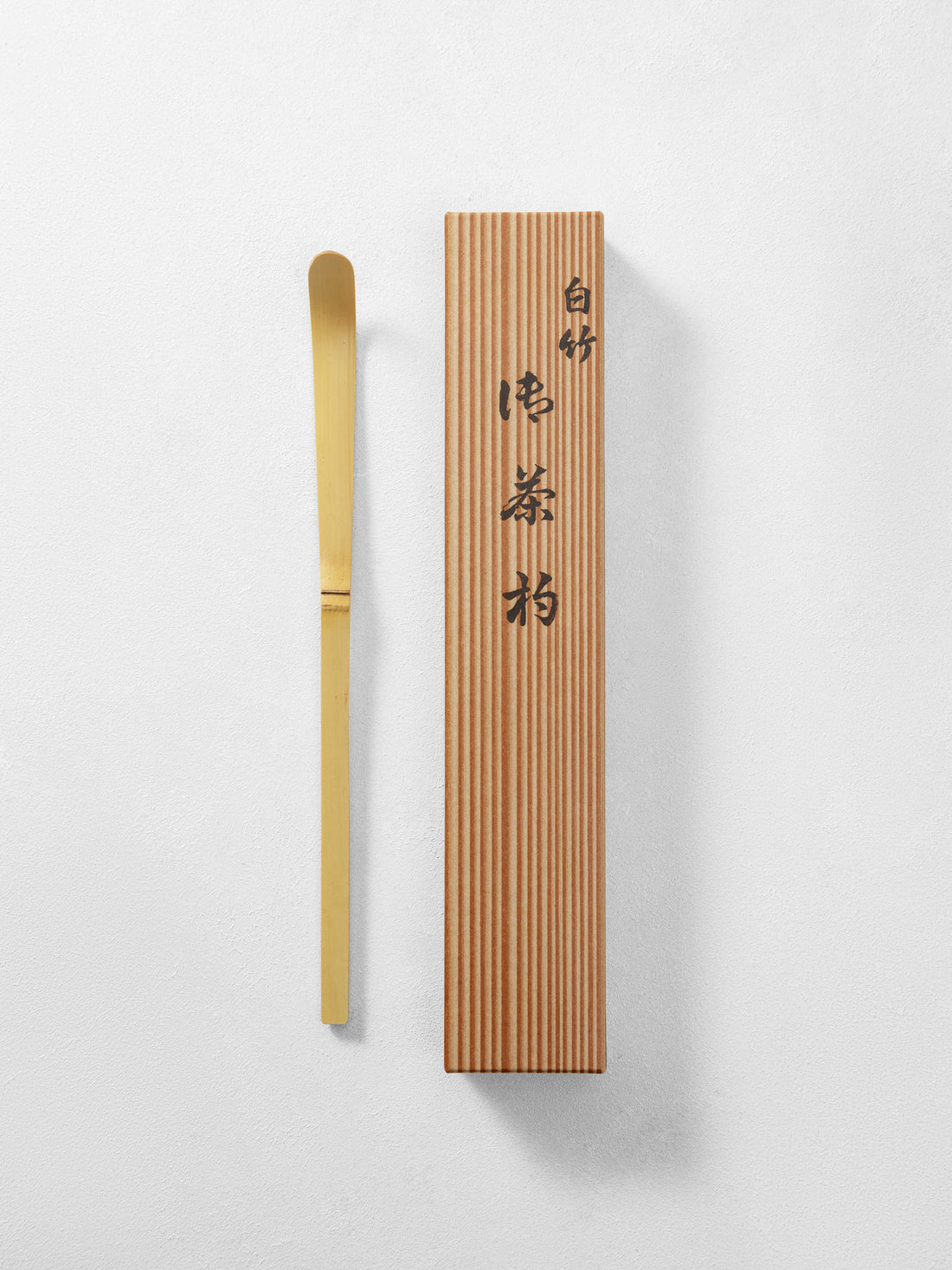In the realm of matcha preparation, there exists a humble yet indispensable instrument – the chasen. While most of the tools required for matcha can be substituted with common household items, the chasen stands as an exception. If you're in search of the one tool that's truly essential for preparing matcha, look no further than the chasen.

Consider this: the chawan can be swapped for a bowl, the chashaku for a teaspoon, the chakin for a tissue or towel, and the natsume/chaire for the container that holds the matcha. However, when it comes to the chasen, it's in a league of its own.
When selecting a chasen, the first criterion is that it should proudly bear the label "made in Japan”. The first reason is Japan is the birthplace of chasen. Here, the knowledge of making chasen craft has been passed down through generations, with each artisan building upon the knowledge of their predecessors

While the allure of a budget-friendly chasen might be tempting, it's important to recognize that the price of a quality chasen reflects the meticulous artistry and tradition that goes into its making. We've had the privilege of collaborating with Suikaen in Takayama traces its roots back to the 16th century and is one of the few studios preserving the tradition of whisk crafting. The head of the studio is its 25th generation master craftsman, Tanimura Yasuburo.
Henon bamboo (hachiku 淡竹), is a specific type of bamboo used to make chasen, grown in the Kinki region of Japan (Nara, Kyoto, Osaka, Wakayama, etc.), is harvested in the winter after 2-3 years of growth. It is boiled to remove oil in the plant, dried in the cold winter air, then aged for another 2-3 years. During this process, the green color of the bamboo fades into the "white" color.

It is a natural process to transform the bamboo from green to white.
On the topic of chasens made outside Japan, it's worth noting that many of these are crafted by individuals with no knowledge of the Japanese tea ceremony, and some may have never even used a chasen to prepare a bowl of tea. Some non-Japanese makers of 'chasens' take shortcuts, resulting in lower costs but compromising the integrity of the bamboo. This can involve improper treatment, including bleaching or the use of pesticides and silica gel packets to prevent mold growth. The idea of using a chasen treated with bleach or pesticides for whisking matcha is far from ideal. Such practices not only harm the craft but also diminish the rich traditions and artistry associated with chasen making.

A chasen should be really made from 1 piece of chasen.
Here are some intriguing facts: The choice of bamboo type often follows the tea school's traditions, such as white bamboo for Urasenke and black bamboo for Omotesenke. Whether you're a seasoned matcha enthusiast or new to the practice, choosing a quality chasen, such as those by master Tanimura Tango, enhances your matcha experience, with thin-tined chasens ideal for usucha and thick-tined ones for koicha preparation.
In summary, a chasen is not just a tool; it is a symbol of history, craftsmanship, and dedication to the art of preparing matcha. When you choose a high-quality chasen, you not only enhance your matcha experience but also contribute to the preservation of Japanese culture and traditions that have lasted for centuries. So whether you are an experienced matcha enthusiast or just beginning your journey, make the chasen an essential part of your matcha preparation!

Suikae Shin Chasen and Okumidori matcha.
Suikaen in Takayama traces its roots back to the 16th century and is one of the few studios preserving the tradition of whisk crafting. The head of the studio is a 25th generation master craftsman, Tanimura Yasuburo.









